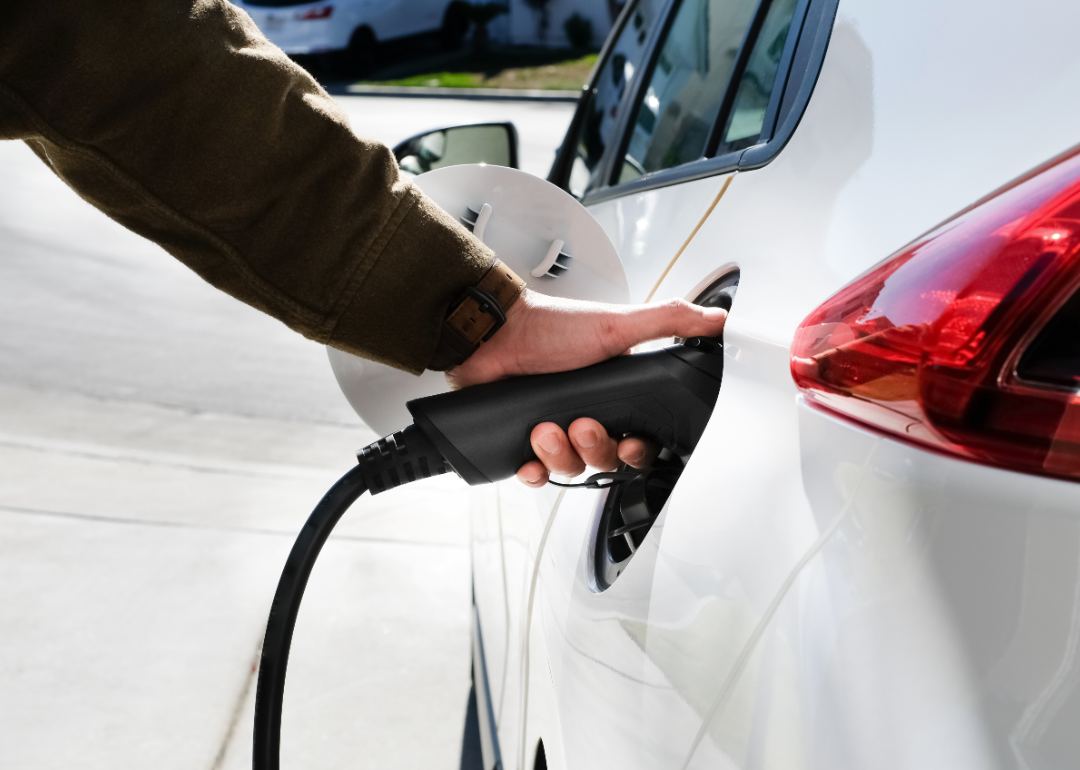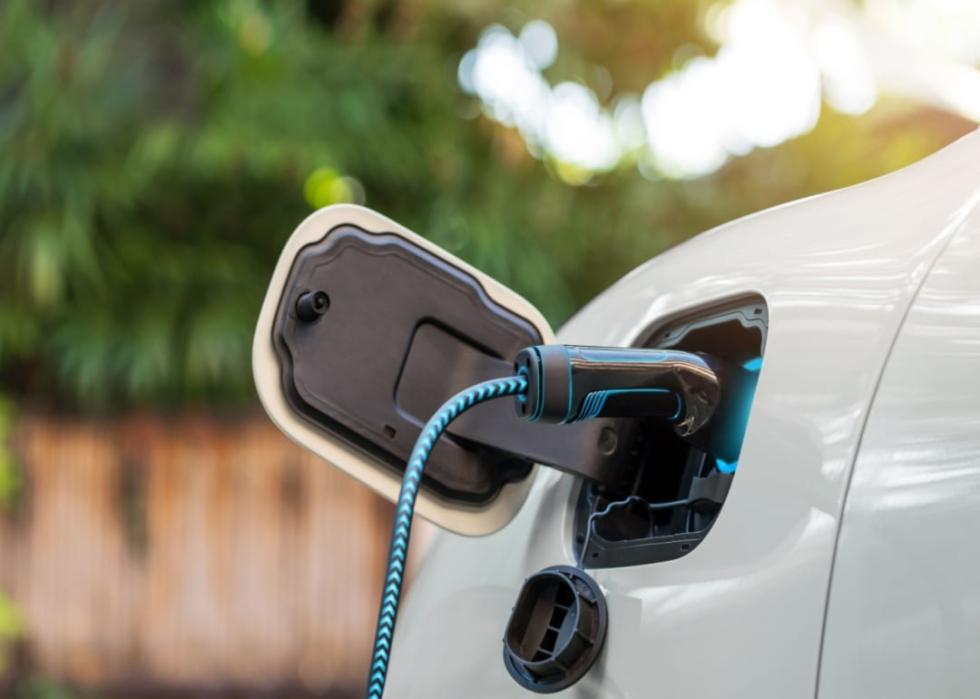
How Washington is committing to electric vehicles
This story originally appeared on Truck Parking Club and was produced and distributed in partnership with Stacker Studio.
How Washington is committing to electric vehicles
States across the country are paving the way for electric vehicles. This green topic is also harshly divided along red and blue lines—which is to say, it's heavily politicized. In North Carolina and Virginia, for instance, Republican leaders have rolled back or stunted EV initiatives adopted by Democrats.
Former President Donald Trump, the Republican nominee in the 2024 presidential election, has criticized EVs and federal EV policies under President Joe Biden. Trump later backtracked and said he's "for electric cars" for a segment of the population after receiving an endorsement from Tesla CEO Elon Musk. But if elected, Trump still intends to undo Biden-era EV incentives.
To cover current EV incentives and get a sense of the impact that rollback could have, Truck Parking Club compiled information from the Department of Energy to illustrate EV regulations and support in Washington as part of a broader national analysis.
This analysis only includes public incentives and policies and does not include efforts by private entities or utility providers. It lists major incentives and laws listed on the DOE website as of Oct. 1, which in many cases incentivize other alternative fuels like biodiesel and ethanol in addition to EVs. This list is intended to be comprehensive but not necessarily all-encompassing.

Washington EV policies
These are the incentives, goals, policies, and privileges offered for EVs and other alternative-fuel vehicles in Washington.
Government goals, policies, and requirements:
- By model year 2030, all new light-duty vehicles sold, purchased, or registered in Washington must be EVs
- Beginning with model year 2025, will require manufacturers to sell zero-emission trucks as an increasing percentage of their annual sales
- Requires state executive and small-cabinet agency fleets to acquire EVs at increasing rates, and will require all new fleet vehicles to be EVs by 2040
- Requires state agencies to use 100% biofuels or electricity to operate publicly owned vehicles, to the extent possible
- All new buildings must prewire at least one parking space, or 10% of all parking spaces, for EV chargers
- Requires regional transportation organizations in large-population areas to collaborate on efforts to promote EV use
- Requires jurisdictions to adopt regulations for permitting EV infrastructure and battery charger use in most areas
- State required to install EV chargers and fueling stations in certain areas
Monetary incentives:
- Grants to install EV chargers at public, workplace, tribal, and multifamily housing locations and along highway corridors
- Grants to replace or convert medium- and heavy-duty diesel vehicles to zero-emission vehicles, including refuse trucks, street sweepers, freight switcher locomotives, port cargo handling equipment, and forklifts
- Grants to design and create zero-emission vehicle car-share programs in underserved and low-to-moderate income communities (for nonprofits and local governments)
- Grants to replace diesel school buses with zero-emission school buses, including fueling infrastructure
- Grants for projects that reduce carbon intensity in state transportation, including fleet electrification, upgrades to electrical transmission and distribution systems, and construction of charging and fueling infrastructure (for transit authorities)
- Business tax credits to purchase new and used alternative-fuel medium- and heavy-duty vehicles, and to install related fueling infrastructure
- Sales and use tax exemption for new and used alternative fuel passenger vehicles and light-duty trucks
- Sales and use tax exemption for EV and fuel cell EV infrastructure and battery sales, labor, installation, and related property
- Leasehold excise tax exemption for public lands used to install, maintain, and operate EV chargers
Privileges, protections, and exemptions:
- Exempts alternative fuel vehicles from state emissions inspections
- Multifamily housing occupants must be allowed to install EV chargers in their parking spaces
Other:
- Plans to use 15% of VW Environmental Mitigation Trust funds to install, operate, and maintain zero-emission vehicle charging infrastructure
- Developing a zero-emission drayage truck demonstration project to guide the transition to zero-emission seaport cargo fleets

Efforts across the nation
In the U.S., the transportation sector is the single leading source of pollution, contributing about 28% of greenhouse gas emissions in 2022. Three-quarters of Americans drive a car to work, most of them alone, and trucks transfer over 60% of freight. As a result, passenger vehicles and freight trucks offer a major opportunity to reduce pollution within the transportation sector.
Efforts to curb vehicular emissions vary widely from state to state. California has led the charge to reduce vehicular greenhouse gas emissions, adopting legislation in 2022 that will require all new vehicles sold in the state to be electric or plug-in hybrids by 2035. Medium- and heavy-duty vehicles like box trucks and semitrucks will follow suit in 2045. Since California's precedent-setting decision, 16 other states have adopted similar mandates with varying timelines and EV sales quotas.
Many states have adopted monetary incentives to promote EV adoption as well. Over half of states provide such incentives to install EV chargers and adopt electric or other alternative fuel buses. Meanwhile, 18 states and Washington D.C. provide monetary incentives for individual residents to purchase EVs. These efforts and others are funded in part by Volkswagen settlement funds, through which the company has paid $2 billion into EV charging infrastructure and $2.9 billion into a state mitigation trust fund in damages for cheating federal emissions tests on nearly 600,000 diesel vehicles.
On a national level, the Infrastructure Investment and Jobs Act is set to invest $7.5 billion in a network of EV charging stations, aiming to add 500,000 chargers across the country. The law includes formulaic state-by-state EV infrastructure funding each year between 2022 and 2026, estimated to total $4.2 billion in all.
Additionally, the 2022 Inflation Reduction Act provides Americans with a $7,500 tax credit for buying new EVs and $4,000 for used EVs, plus credits for commercial clean vehicles, EV charging station properties, continued development and manufacturing of clean energy and transportation technologies, and more.
Many of these efforts may face the chopping block if Trump wins this year's presidential election. The Republican nominee has said he will not allow states to ban gas-powered cars or trucks and may end the national EV tax credit. Meanwhile, Democratic nominee and current Vice President Kamala Harris has supported EV expansion efforts from within the current administration, even casting the tie-breaking vote on the pro-EV Inflation Reduction Act.
The outcome of the election is likely to have major implications for EV adoption and automobile regulation. Read the national analysis to get a deeper sense of efforts across the country—and which states may be most affected by federal policy changes.
This story features data reporting and writing by Paxtyn Merten and is part of a series utilizing data automation across 48 states and Washington D.C.



